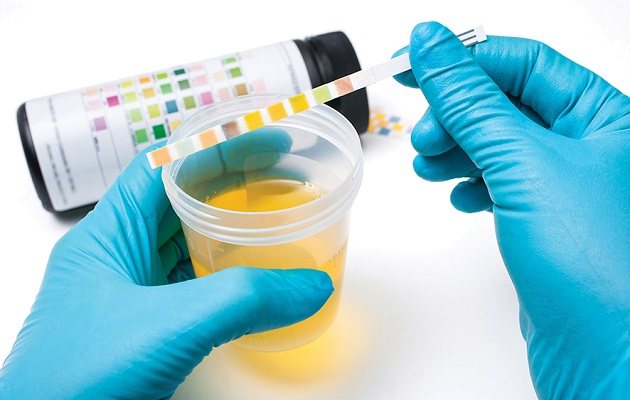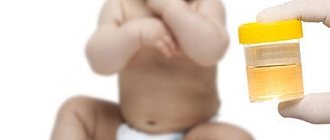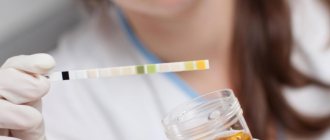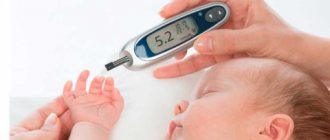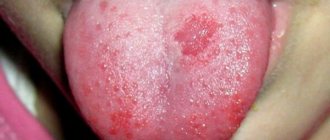Urinalysis is a painless but very informative procedure. The detection of an increased number of red blood cells in the urine of a child is called hematuria or erythrocyturia.
Red blood cells are detected by microscopy of the urinary sediment formed after 2 hours of settling. The precipitate is collected and centrifuged, then examined under a microscope. Red blood cells and other elements that are visible to the researcher are counted. The number of cells is recorded as the number of elements in the field of view.
What does it mean if there are red blood cells in the urine?
Red blood cells are the formed elements of blood, carriers of hemoglobin. Being large in size, red blood cells cannot normally pass through the kidney membranes, with the exception of isolated elements. If the level of red blood cells in a child’s urine is increased, this means that:
- high permeability of the walls of the capillaries of the kidneys;
- there are disorders of the glomerular apparatus of the kidneys;
- microtraumas of the urinary tract mucosa are possible.
In a relatively healthy child, a short-term and reversible increase in red blood cells in the urine occurs with excessive physical and mental stress.
Hematuria is observed in children under pathological conditions caused by:
- diseases of the kidneys and urinary organs;
- andrological and gynecological diseases;
- long-term use of antibiotics or non-steroidal anti-inflammatory drugs (aspirin, ibuprofen, paracetamol);
- intoxication due to infectious diseases, chemical poisoning.
Doctors count more than 80 pathological conditions manifested by hematuria. Red blood cells in a child's urine sample mean further research to identify the causes and features of the disease, the symptom of which is hematuria.
Red blood cells in urine photo under a microscope
Indicators of urine analysis in children
Parents often have questions about how to give their child a urine test.
so that the result obtained is as reliable as possible? But the next and more important question is deciphering the indicators of the already obtained result of a general urine test. When assessing urine in children, they look at the quantity. color. density. urine reaction - pH, check the presence of protein with a biochemical urine test. glucose. urobilin. ketone bodies and acetone. The urine must be examined under a microscope. To do this, 4-5 ml of children's urine is centrifuged, as a result, all particles (cells, salts) settle to the bottom. This sediment is applied to a glass slide and examined under microscope magnification.
Before giving your child a urine test, be sure to wash him and dry his external genitalia with a towel. If this is not done, then a large number of epithelium, leukocytes and even erythrocytes and bacteria will be detected in the urine sediment, which will make it impossible to decipher the study.
Indicators of urine analysis in children detected under a microscope are divided into two large groups: organic and inorganic sediment. Organic sediment consists of cells - erythrocytes and leukocytes (formed elements in urine sediment), epithelium of the kidneys or urinary tract, cylinders. Inorganic urine sediment consists of salts (urates, phosphates, oxalates, etc.).
Red blood cells in a child’s urine can be detected with the naked eye. If the urine is pink or even red (hematuria), then it contains red blood cells. In children's urine, red blood cells are found in glomerulonephritis, nephrotic syndrome, and pyelonephritis. damage to the urinary tract and urolithiasis. Normally, their number does not exceed 2 in one field of view of the microscope.
Boys have 0-4 leukocytes in urine analysis, girls have 0-6 in the field of view. Depending on the origin of leukocytes, their appearance in urine varies. Leukocytes from the kidneys appear in glomerulonephritis and interstitial nephritis, from the calyces and pelvis of the kidney in pyelonephritis. anomalies of kidney development, kidney cysts, hydronephrosis. In a urine test in children, it is possible to identify leukocytes that appear in the urine from the lower urinary tract (bladder, urethra) with cystitis, bladder stones, tuberculosis, chronic urethritis. stenosis of the external urethra. The presence of the inscription “active leukocytes” in a child’s urine test indicates the intensity of the inflammatory process.
In children's urine analysis, only small amounts of squamous epithelium from the bladder are found. This indicator of urine analysis in children strongly depends on the quality of preparation for the study. An increase occurs when the baby is not properly prepared for a urine test, for example, if he was not washed before the test.
An increase in the amount of epithelium occurs in diseases of the kidneys and urinary tract: cystitis, urolithiasis, dysmetabolic nephropathy, toxicosis, diabetes, poisoning.
There should be no casts in a pediatric urine test. The appearance indicates severe kidney disease, inflammation and degenerative changes. A urine test in an infant may normally contain hyaline casts. This condition is temporary and after 2-3 months they disappear.
Salts in the urine can appear when the metabolism of proteins, fats or carbohydrates is disturbed and depends on the food consumed. Uric acid appears when eating meat foods, oxalates after tomatoes, sorrel, grapes, oranges, sulfates after lingonberries, and urates after physical stress. Ammonium urate salts in a urine test in an infant may be present in small quantities. An increase in the secretion of these salts occurs in newborns in the first week of life and goes away on its own, without treatment.
Table of norms
The normal rate of red blood cells in urine in children depends on the method of examining the sample.
Table of norms for boys and girls for various laboratory methods of studying urine analysis
| Method | Red blood cell norm |
| Urine microscopy | Less than 3 cells in the field of view |
| Kakovsky-Addis method | Less than 1 million in 24 hour urine |
| Amburger's test | Less than 150 in minute volume |
| Nechiporenko method | Less than 1000 per ml |
The norm of red blood cells in children does not depend on age - either there are none at all, or the values are lower than those given in the table.
Hematuria in children can have varying degrees of severity. Indicators of the degree of hematuria, determined from centrifuged urine sediment in the analysis, are presented in the table.
| Degree of hematuria | Number of red blood cells in the field of view | Appearance of urine |
| Minor (microhematuria) | 3-15 | There are no visual changes |
| Average | 15-40 | There are no visual changes |
| Significant (gross hematuria) | 40-100 | Urine is cloudy, reddish |
Doctors consider the Nechiporenko method to be the most informative for determining the number of red cells. An average portion of urine is collected in the morning after sleep, at least 10 ml, and delivered to the laboratory within an hour.
Causes of increased number of red blood cells in urine
If, after a repeat test, the level of blood cells is higher than normal in the child’s urine, then the cause may be the development of tuberculosis. If the number of red blood cells in a urine test is increased, the child should be sent for diagnostics:
- genitourinary system;
- kidney;
- lungs;
- gastrointestinal tract.
These examinations should be prescribed by a specialist if he cannot identify the problem without conducting comprehensive tests. The reasons for the increased number of red blood cells also include hypothermia in the child. In addition, there are many other reasons that can cause the appearance of red blood cells in the urine. A repeat urine test can be performed using a different method than the first option. For a child, a value of less than 1000 is considered normal. When passing tests using various methods, the accuracy of the final result can be improved.
Red blood cells can be changed (if the red blood cells are darkened, this indicates that they have been present in the urine for a long time) and unchanged light. In most cases, the presence of red blood cells in a urine test indicates the presence of the following kidney and urinary tract diseases: malignant kidney tumor, cystitis, urolithiasis, pyelonephritis, nephrosis, infarction and kidney tuberculosis, kidney injury or toxic damage after long-term use of certain medications. The appearance of red blood cells in the urine may be associated with systemic diseases, such as hemorrhagic fever, hemorrhagic diathesis, hypertension, and circulatory failure.
Is there a difference in analysis between girls and boys?
There should be no red blood cells in the urine of healthy children of different sexes and ages, or single elements may be detected. There are no data from the medical literature indicating age-sex norms of red blood cells in the urine of children.
For boys and girls, the norm of red blood cells in urine is the same - less than 3 elements in the field of view.
In teenage girls, menstrual blood may be included in urine analysis. Girls are not recommended to donate urine during their periods. Before collecting the analysis, careful hygiene of the genital organs is carried out in children of both sexes.
The norm of red blood cells in the urine of a child
The criteria for assessing the indicators of blood cells found in children's urine are determined by the type of study that the attending physician recommends. The primary diagnostic procedure is a general clinical urine test. All other tests can be prescribed additionally if there are deviations in the main parameters. Their results are clearly displayed in the table.
| Type of study | Normal values |
| OAM | Up to 2-4 in p.z. |
| According to Nechiporenko | Less than 1000 per 1 ml of liquid |
| According to Amburge | No more than a thousand per minute. about. |
| According to Kakovsky-Addis | Less than a million in daily volume |
The number of red blood cells is determined by microscopy of the sediment. The presence of single elements in the field of view is considered the norm. Taking into account the age of the child, the maximum permissible level of blood cells will differ. Thus, in infants, the presence of even 7 units in the urine is considered normal, which is explained by the accumulation of red blood cells during development in the womb. The kidneys' ability to filter plasma increases with age.
| Age | Normal (in view) |
| Up to 1 year | 2-7 |
| 1-12 years | 2-4 |
| Over 12 years old | Boys – up to 2 Girls – up to 4 |
The presence of more than 4 units in the analysis should be a reason for a general diagnosis of the child’s condition. Taking into account the quantitative presence of blood elements, micro- and macrohematuria are distinguished. In the first case, urine does not change its qualities, the color remains unchanged, and the analysis indicates the appearance of up to 20 units of elements in the field of view. In the second situation, their high concentration is noted, which is reflected in the color of the urine and its acquisition of a red or brown tint.
Do reference values change with age?
The reference value is the average statistical result of examining a large number of healthy people for some laboratory indicator. Reference values for the content of red blood cells in urine do not change with age.
M.V. Markin in the manual “General clinical tests of blood, urine, their indicators, reference values, changes in parameters in pathology” (Novosibirsk, 2006) points out about red blood cells in the urine: normally, red blood cells are either absent, or microscopy reveals up to 2 in the field vision. What does an increased level of red blood cells in a woman’s urine mean?
Why is there an increase in red cell levels?
Reasons for the increase in red blood cells in the urine of a child:
- neoplasms of the genitourinary organs;
- glomerulonephritis and pyelonephritis;
- infectious lesions of the genitourinary tract;
- kidney damage due to injury or injury;
- high blood pressure;
- poisoning by chemical or natural toxins.
It is necessary to determine why many red blood cells are found in children's urine. Pathology can be of a renal (renal) and extrarenal (extrarenal) nature. A study of the size and shape of red blood cells will help identify the source of the problem.
Changed
The renal nature of hematuria is indicated by:
- parallel detection of elevated protein;
- renal failure;
- the presence of morphologically altered red blood cells.
Altered red blood cells differ from normal ones in size, shape, and hemoglobin content. A weakly acidic or weakly alkaline urine environment causes slight swelling of red blood cells. In an acidic environment, red blood elements lose hemoglobin and take on the appearance of discolored rings. The process is called leaching.
When studying the analysis with a phase-contrast microscope, you can examine acanthocytes - modified red blood cells with cell wall outgrowths. The detection of acanthocytes in a proportion of 5% of all red cells found is a sure sign of impaired glomerular filtration.
Unmodified
If unchanged red blood cells are found in a child’s urine sample, the following are possible:
- when combined with leukocytosis, neoplasms in the kidneys, bladder, ureters;
- injuries to the kidneys, bladder, urethra;
- coagulation disorders, congenital or acquired;
- infections;
- compression of the renal vein;
- increased blood pressure;
- poisoning with medications, chemicals, poisons of plant or animal origin.
Even the slight presence of unchanged red blood cells in a child’s urine requires further diagnostic measures - ultrasound, X-ray with contrast, MRI and other studies.
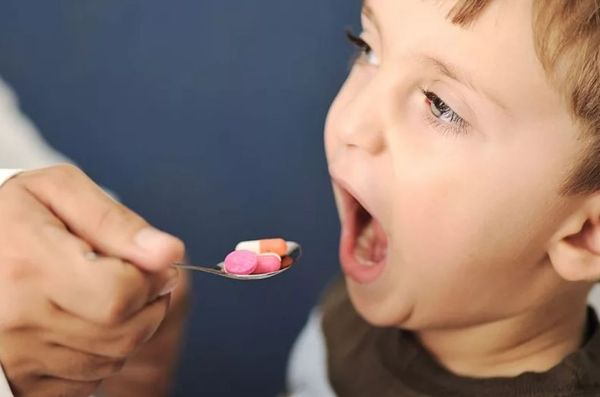
Drug poisoning may cause red blood cells in urine
Why does it occur

Glomerulonephritis is a possible cause of hematuria
- Bleeding disorder.
- Renal, in particular:
- glomerulonephritis;
- Goodpasture syndrome;
- nephrosclerosis;
- polycystic kidney disease;
- hereditary nephritis;
- pyelonephritis;
- Wilms tumors;
- angiomyolipoma
- Damage to the renal vessels.
- Extrarenal. The disease affects any part of the excretory system except the kidneys:
- cystitis;
- cysts;
- stones;
- organ injury;
- urethritis;
- tuberculosis.
- Others, for example:
- rheumatoid arthritis;
- acute respiratory infections;
- endometriosis;
- diseases of the gastrointestinal tract;
- sepsis;
- purulent inflammation (phlegmon, abscesses);
- osteomyelitis.
In infants

For a newborn, up to seven units is normal. During the first 12 months, this indicator in the baby’s urine may increase due to frequent colds. In such a situation, no treatment is prescribed, and the level of red blood cells can be normalized by using a complex of vitamins prescribed by the pediatrician.
- nutritional imbalance;
- the presence of preservatives and dyes in the products consumed by the child;
- excessive consumption of citrus fruits by a nursing mother.
In such a situation, treatment should be under the supervision of a doctor and include a change in the type of diet, which should be dominated by vegetables and cereals.
Causes in an infant
In a baby's first week of life, up to 3 red blood cells in the field of view can be detected in the urine. Hematuria in an infant is diagnosed in the presence of congenital or intrauterine developmental anomalies:
- polycystic kidney disease;
- hydronephrosis;
- renal neuroblastoma.
Anomalies of the urinary tract occur in 7.5 cases per 10,000 newborns. The most common congenital pathology in infants is hydronephrosis. Erythrocyturia of a newborn with external well-being provides grounds for early detection of anomaly, which increases the effectiveness of treatment.
To identify the true causes of red blood cells in the urine of an infant, a thorough analysis of the history of family hereditary diseases is carried out.
Additional research methods
If red blood cells are detected in a child’s urine, additional research is required to clarify the cause of the possible condition.
One such study is the three-glass test. The process of urination is carried out in three different containers (“glasses”). The detection of red blood cells in each of them will indicate the pathology of a certain area of the urinary system.
An ultrasound examination of the kidneys may also be prescribed.
Microbiological examination of urine will detect bacteria in the urine, determine their type, and prescribe therapy, excluding drugs to which microorganisms may be resistant.
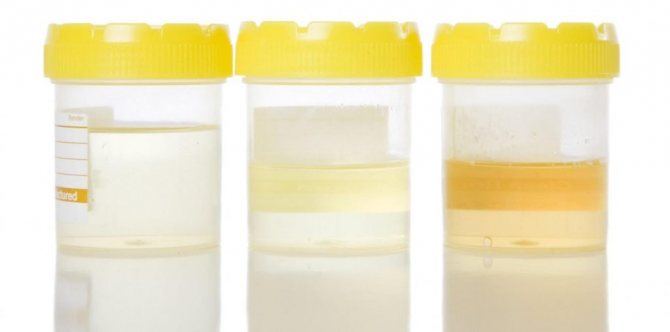
What does at temperature mean?
If a child’s body temperature rises, this means an infectious-inflammatory process. The causative agents of bacterial diseases of the urinary organs are Escherichia coli, Pseudomonas aeruginosa, Klebsiella, streptococci, staphylococci, mycobacteria, and candida fungi . In children, contamination occurs due to poor perineal hygiene, medical procedures, decreased immunity, and inflammatory diseases of the large intestine.
At temperature, the permeability of the vascular walls increases, red blood cells leave the renal capillaries and penetrate into the urine. Bacterial inflammation causes swelling and damage to the vessels of the urinary tract mucosa, and kidney dysfunction.
An increase in temperature above 38°C, pain in the lower abdomen, difficulty urinating, changes in the color or smell of the volume of urine discharged, or the child’s poor health is a reason to call emergency help.
If red blood cells are found in the urine of an infant
Even during intrauterine development, the baby produces a larger number of red blood cells than the established norm, but after birth, normalization occurs very quickly.
Frequent colds of the respiratory tract can lead to the growth of particles; vitamin intake is recommended for treatment. In infant boys, development and exposure of the glans penis may occur, so it is worth visiting a urologist.
